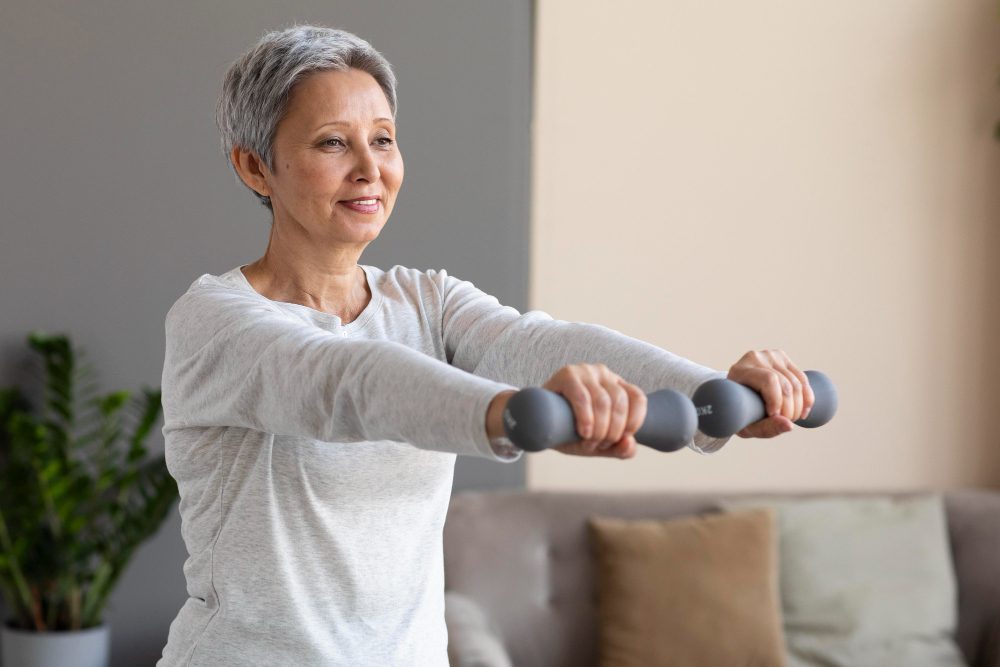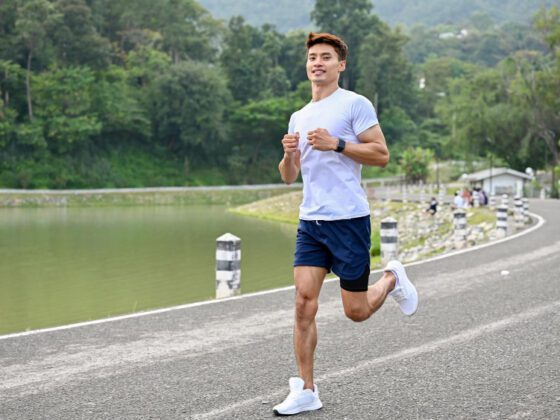Table of Contents Show
✍️ AI is summarizing:
As we navigate the ever-evolving landscape of aging, maintaining our physical strength and mobility becomes an increasingly crucial pursuit. Dr. Amy Young, a double-board-certified orthopedic surgeon, has dedicated her career to empowering individuals with lifelong fitness strategies that promote health and vitality well into old age.
In a recent interview with Business Insider, she shared three invaluable tips that have helped her remain at the forefront of active aging.
Related post:
- Lifelong Fitness: 4 Habits for a Healthy and Active Life
- Protein for Healthy Aging: A Guide to Muscle Maintenance
- The New Longevity Necessity: Core Strength for Aging
The critical decade: Lifelong fitness strategies start between 35 and 45

Dr. Young emphasizes the importance of the 35 to 45 age range, which she refers to as the “critical decade.” During this pivotal time, people should begin implementing lifelong fitness strategies to counteract natural muscle loss and establish habits that support long-term health.
By focusing on building a strong musculoskeletal foundation early, individuals can significantly reduce their risk of age-related injuries and maintain independence in later life.
Strength training: A core pillar of lifelong fitness strategies
At the heart of Dr. Young’s lifelong fitness strategies lies strength training. As we age, muscle mass naturally declines, which can affect everything from posture to balance. Dr. Young encourages people to learn proper weightlifting techniques, even with the help of professionals. The benefits are well-documented: strength training not only improves everyday function but is also linked to increased lifespan and reduced risk of chronic disease.
Nutrition and supplementation for lifelong fitness

Another vital component of lifelong fitness strategies is proper nutrition. Dr. Young recommends a high-protein diet — about 0.75 grams per pound of body weight — to help maintain muscle mass. Additionally, sufficient vitamin D intake is crucial for bone health and overall well-being. Whether through sunlight, diet, or supplements, optimizing your intake supports a strong, resilient body.
Outdoor activity and nature: Grounding fitness in lifestyle
Incorporating outdoor activity is a key lifestyle element in Dr. Young’s lifelong fitness strategies. Activities like hiking, walking, or yoga in nature can enhance physical fitness while also improving mental clarity and mood.
Dr. Young suggests exploring local parks or trails as a fun and grounding way to stay active. Nature’s calming presence can amplify the benefits of movement, making it easier to stay consistent.
Countering sedentary habits with active microbreaks

A common challenge to lifelong fitness strategies is the modern sedentary lifestyle. Dr. Young warns that long hours of sitting weaken the musculoskeletal system and accelerate aging.
To combat this, she advises short, frequent “microbreaks” with simple movements like wall squats or stretches. These small actions build up over time and help maintain muscle tone even in a desk-bound routine.
A holistic blueprint for lifelong fitness
Dr. Young’s approach to lifelong fitness is a comprehensive one, encompassing both physical and nutritional elements. By prioritizing strength training, optimizing protein and vitamin D intake, and incorporating regular movement breaks, individuals can take proactive steps to maintain their muscle, bone, and overall health as they age. This holistic strategy is a key part of effective lifelong fitness strategies, empowering us to remain active, independent, and resilient, even as the years pass.
As the population continues to age, the insights shared by Dr. Young serve as a beacon of hope and a roadmap to a future where active aging is the norm, not the exception. By embracing these evidence-based strategies, including the benefits of outdoor activities and grounding in nature, we can all unlock the secrets to lifelong fitness and enjoy the boundless benefits of a strong, mobile, and resilient body.
Conclusion
Embracing lifelong fitness strategies isn’t just about adding years to your life — it’s about adding life to your years. Whether you’re in your 30s, 50s, or beyond, it’s never too late to take charge of your health. With insights from Dr. Amy Young, we now know that a mix of strength training, proper nutrition, outdoor movement, and mindful daily habits can build a foundation for strength, mobility, and independence that lasts a lifetime.
So start today — lift a weight, take a walk in the sun, or stand up from your chair and stretch. Small steps, when done consistently, can lead to powerful, lasting change. Your future self will thank you. Follow our official Facebook page now to receive more interesting information.










